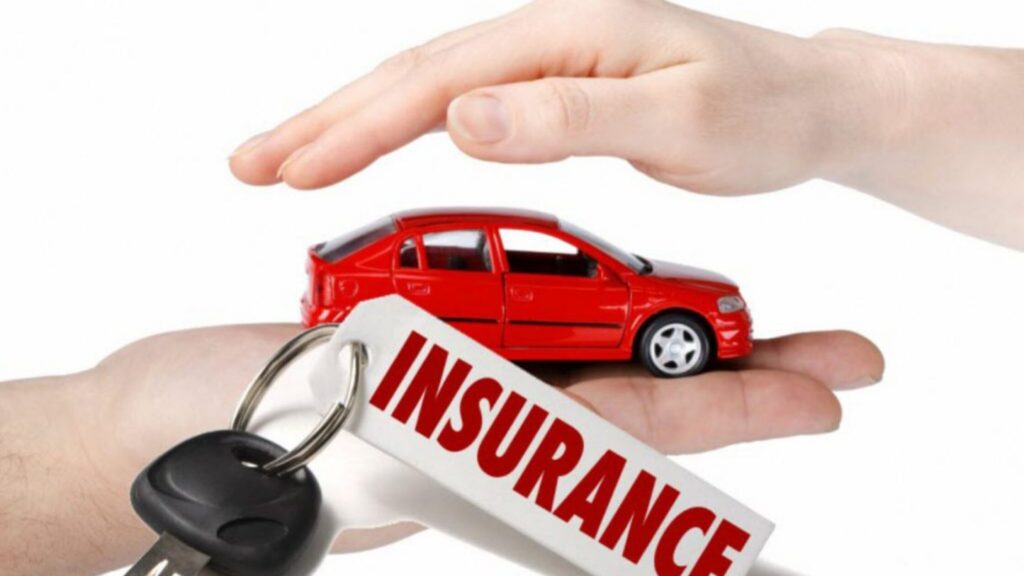It goes without saying that car insurance, everywhere in America, is an imperative inclusion while owning a car. It is also, almost everywhere in the country, a legally binding norm to ensure that drivers and passengers are covered, and property is taken care of in case of any accident. But, in real life, auto insurance has a long way to go to be homogeneous in pricing because of a variety of factors in states, ranging from location and driving history to vehicle type and even credit scores. Understanding these differences can help consumers make informed choices and may enable them to lower their premiums.
In this long post, we will cover which factors influence auto insurance premiums to differ across the United States of America by pointing out high and low-cost states, influencing personal factors, and how one can reduce premiums. We shall include highly paid CPC keywords related to auto insurance, loans, and financial planning in the course of the work.
The Fundamentals of Automobile Insurance Premiums
Auto insurance premiums refer to amounts paid by policyholders to maintain insurance on themselves. These are proportional to the chance of the insurer to make a payment on a claim. The risk corresponding to the insurance provider is measured using many different metrics, such as the policyholder’s driving record, the type of vehicle, and the location.
Keywords: auto insurance premiums, car insurance rates, insurance coverage, vehicle insurance costs
There are Geographic Variations in Auto Insurance Premiums
The location of the person insured plays the widest role in influencing the car insurance premiums. Where you live plays a wide difference in the amount you have to pay to get car insurance. This is evidenced in state laws varying as well as density of the populations, crimes and rates of accidents.
Really, there are a number of states across the country well known for having very high rates of car insurance premiums. This is mostly dictated by the rate of accidents, theft, and fraud in some states. Therefore, insurance costs will be very high. What actually registers as the most expensive car insurance cost in the states is Michigan, Louisiana, and Florida.
Michigan: Often leading the nation in auto insurance costs, Michigan has one of the highest auto insurance premiums—an average of $2,551 annually. The major reason is the no-fault insurance law, which makes it mandatory for drivers to carry an unlimited personal injury protection coverage, thus increasing premium considerably.
Louisiana: On account of many factors, which include a very high rate of uninsured motorists, high litigation rates when an accident happens, and a higher-than-average number of severe weather conditions such as hurricanes and floods causing enhanced claims, auto insurance premiums are also the highest in Louisiana.
Florida: Florida auto insurance rates top the ranks among expensive states in the US. That would be partly due to its reputation for high insurance fraud. Moreover, the high population density and large pool of retirees increase the frequency of accidents and raise premiums.
Keywords: auto insurance Michigan, car insurance Florida, vehicle insurance premiums, no-fault insurance
Low-Cost States
Conversely, there are also states that have relatively low auto insurance rates. These are usually states that have fewer accidents and thievery, fewer numbers of uninsured drivers, and more favorable weather conditions leading to less claims.
Maine: Many survey studies refer to Maine as one of the most inexpensive states in terms of auto insurance. There is a low population density in this state, which means there are fewer cars on the roadways and less likely to be an accident. Also, Maine has a low rate of uninsured drivers and fewer occurrences of insurance fraud.
Vermont: Much like Maine, Vermont’s auto insurance premiums would typically be fairly low because of its rural character, minimal crime, and less severe weather. These would tend to reduce the level of risk involved with accidents and insurance claims.
Ohio: This state also sees relatively less cost in insurance. The great level of competitiveness in the state’s insurance market and overall low cost of living contributes to these affordable premiums. Ohio experiences fewer automobile thefts and lower accident rates than the national average, further keeping the state’s insurance cost quite manageable.
The Keywords: cheapest auto insurance Maine, car insurance Ohio, affordable car insurance, low-cost vehicle insurance
Factors Affecting Automobile Insurance Rates
Although in the determination of auto insurance premiums the place is quite an important factor, it is not the only factor. There are a number of personal factors that can play a part in how much one pays for auto insurance. He should become aware of these factors in order to manage the premiums more effectively, or even save money that is paid.
Driving History
Arguably, the most important aspect with regard to auto insurance premiums is one’s driving history. Drivers who have not received any accidents, traffic violations, or filed claims usually have a lesser fee. In stark contrast, drivers who have a previous record of either getting into accidents or traffic violations generally end up having auto insurance premiums quite significantly increased.
Insurance companies will find drivers who have had previous traffic accidents or violations to be riskier, hence they will deem it necessary to charge such drivers a higher premium. As a matter of fact, an average, single speeding ticket raises the car insurance rates of a driver by quite a high percentage.
The Keywords : safe driver discounts, driving history impact on insurance, traffic violations insurance, accident forgiveness
Vehicle Type
The type of vehicle you drive also bears heavily on the cost of your auto insurance. Generally speaking, expensive cars are more to insure than less expensive ones because they are costlier to fix or replace. Sports cars, luxury vehicles, and high-performance cars will usually carry higher premiums.
On the other hand, those vehicles that have high marks in safety, have anti-theft features, and whose repair cost is low have lower insurance costs. Insurance companies consider these vehicles low risk hence the cost of coverage.
Keywords with the: how much does it cost to insure a vehicle, luxury car insurance, safe car discount insurance, sports car auto insurance
Age and Gender
Age and gender are also rated on auto insurance. Younger drivers statistically, especially teen drivers, are prone to accident involvement. Therefore, these are charged with a higher premium by insurance carriers; however, premiums for this age bracket tend to be on a decline as this group keeps driving with a high record.
Gender may play a factor, but its effect on this impact will depend on the state. Typically, men cost more for auto insurance compared to women, yet the gap in price is more significant for a teenage driver simply because, in the case of an accident, men on average are involved in more and tend to take more risks while driving.
The Keywords: auto insurance teen driver, car insurance for a young driver, gender’s impact on car insurance, insurance for drivers, a male’s insurance
In most states, credit score is another variable considered by insurance firms in auto insurance premium determinations. Studies have proved a ratio between credit score and the possibility of having to make an insurance claim: everyone with poor credit is statistically more likely to do so.
Thus, individuals who have an unfavorable credit score end up paying more for their auto insurance. On the other hand, a very good credit person is most likely to enjoy reduced premiums. Note that the strategy is not adopted in all the states, however.
The Keywords : Credit score impact on insurance, car insurance and credit score, improving on credit for lower premiums, Insurance for Bad Credit
AUTO INSURANCE PREMIUMS: STATE REGULATION
Critical to the determination of auto insurance premiums is the role played by the states’ regulations. There are different laws and regulations for each state, and guide how auto insurance coverage should be written. Some include the use of credit scores in determining rates, minimum coverage the writ of insurance and if the state is a fault or no-fault state.
Minimum amount of coverage
Among the most significant determiners to the premiums are the state’s minimum coverage requirements. They dictate the minimum amount of liability cover that drivers should have. In states with higher sets of minimum coverage requirements, the premiums are usually high, since drivers are required to buy more insurance.
High minimum coverage requirements in states like New Jersey and New York indicate that the premiums for the state are high, compared to the rest, while the low minimum coverage requirements in states like Iowa and South Dakota result in low premiums.
The Keywords: state minimum coverage auto insurance, liability insurance requirements, minimum coverage car insurance, state insurance laws
Fault vs. No-Fault States
Another variable from one state to another that also plays a major role in determining how much one has to pay for auto insurance is whether a state is run under fault or no-fault regulation. In a nutshell, in fault states, insurance refers to one party indemnifying the other for the mess created in an accident. In such cases, the responsible party will usually pay through liability insurance. In contrast, in a no-fault legislation, the car insurance each carries will pay for medical treatment automatically, no matter who was at fault.
In no-fault states, insurance premiums are usually higher, if one is to consider the fact that companies which insure drivers against loss bind them with personal injury protection, which guarantees the policyholder medical therapy, loss of earnings, etc., in case of a car accident, regardless of which party is at fault.
States like Florida and Michigan, using no-fault insurance, have a high premium rate because extra coverage becomes an expensive proposition. The insurance costs escalate due to the no-fault concept. The fault states have reasonably priced premium rates.
The Keywords: no-fault insurance states, fault vs no-fault auto insurance, PIP coverage, liability insurance
How to Lower Your Auto Insurance Rates
There is lots of variation in the USA for auto insurance premiums, so consumers need to know how to save on their cost. Below are ways that may assist you in lowering your premiums for auto insurance:
Shop Around
One of the best ways to effect lower premium charges for auto insurance is by shopping and comparing quotes from different insurers. Differences in insurance premiums, usually for the same level of coverage, are quite significant among providers. Get quotes from various insurers to get the best deal, and you may find yourself saving hundreds of dollars.
Use The Keywords: compare auto insurance quotes, best car insurance rates, cheapest auto insurance, affordable vehicle insurance.
Raise Your Deductible
Higher deductibles can lower your auto insurance premiums because that means the amount of dollars you will be called upon to part with from your pocket prior to an insurance settlement. A bigger deductible means a lower monthly premium for you. But still, be very much sure that you can pay the deductible if an accident happens.
The Keywords: high deductible car insurance, lower auto insurance premiums, car insurance savings, deductible vs premium
Bundle Insurance Policies
Many providers offer discounts to consumers who bundle two or more policies together, like auto and home. Combining your polices under one insurance company can allow you to garner large discounts on your premium rates.
The Keywords: bundle auto and home insurance, insurance discounts, multi-policy savings, car insurance bundle
Maintain a Clean Driving Record
One of the most excellent tips to keep your car insurance fees to a low is having a clean driving record. Avoiding accidents, traffic violations, and lodging claims by adopting all steps necessary on your part will make you eligible for an automatic safe driver discount, keeping your premiums affordable always.
The Keywords: safe driver discounts, clean driving record insurances, accident-free insurances, good driver car insurances
Boost Your Credit Score
Remember that if they are using your credit score for your auto insurance rates, you can actually lower your rates by increasing your credit score. Regularly pay your bills, reduce your debt and look at your credit report often to try and see if there is any errors on it which all help your credit score to reduce your insurance rates.
CPC Keywords: improve credit score, car insurance and credit, lower insurance premiums, credit score impact on insurance
Conclusion
Auto insurance premiums vary greatly from one corner of the country to the other and are influenced by a complex interaction of factors, including location, driving history, type and age of vehicle, gender, credit score, and other factors. Other important factors include state regulations for minimum coverage requirements and the fault vs. no-fault systems.
These factors are critical for auto insurance cost management on the part of the consumers. Drivers can take control of auto insurance expenses by shopping around, increasing deductibles, bundling policies, maintaining a clean driving record, and even improving credit scores in pursuit of saving hundreds of dollars every year.
In a country as vast and varied as the United States, it’s important to bear in mind there is no one-size-fits-all approach to auto insurance. Armed with knowledge and the right strategies, you can carefully carve your way through the treacherous landscape of the auto insurance market to get the best coverage at an affordable cost.
For more information visit the following sites:








